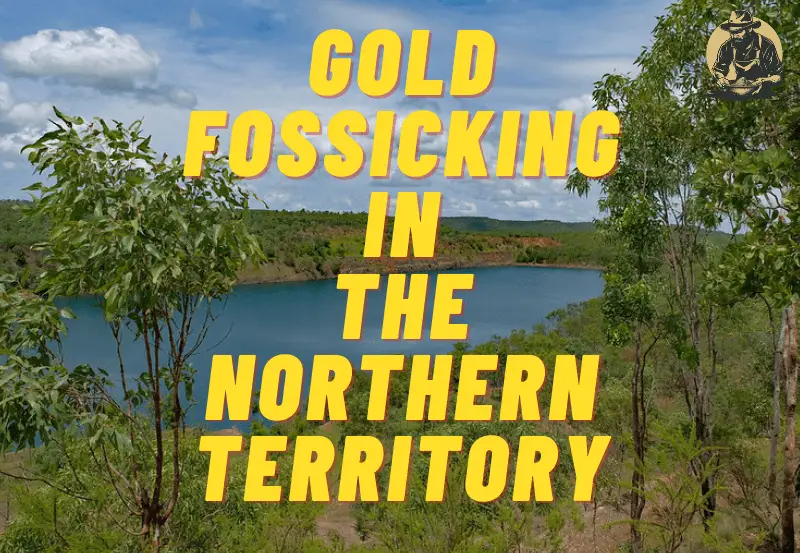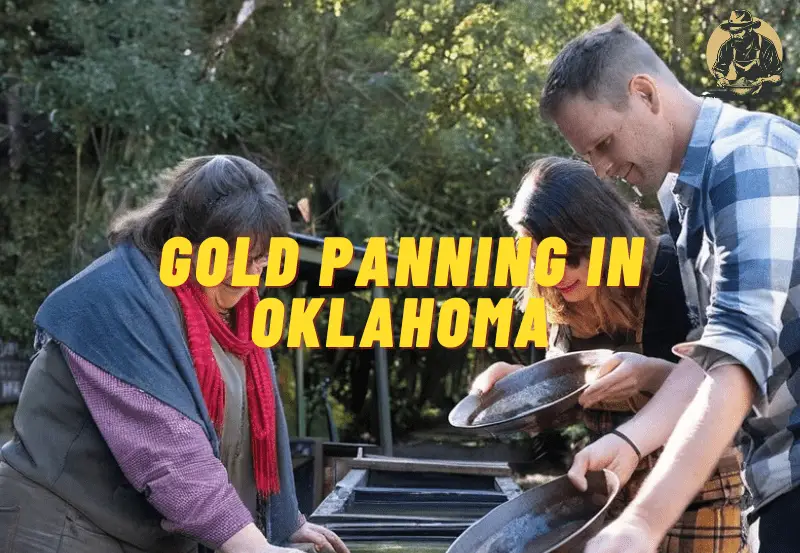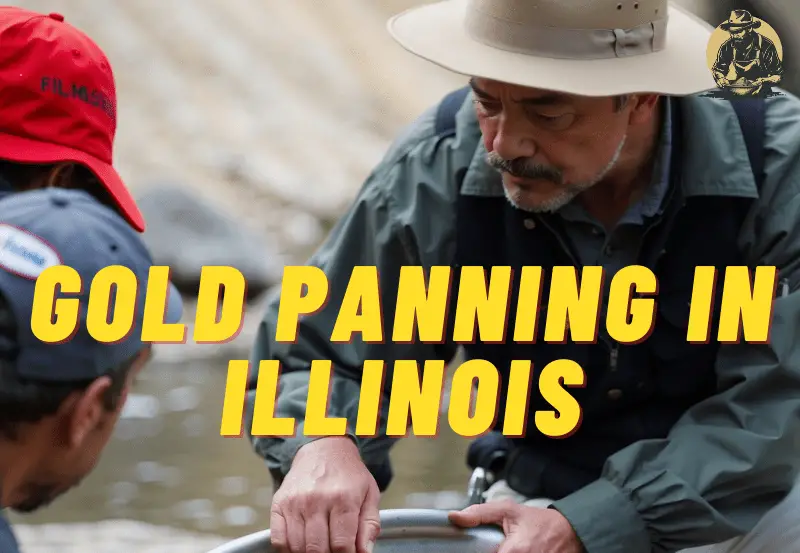Imagine embarking on a thrilling adventure in the vast and untamed landscapes of the Northern Territory, where hidden beneath the surface lies a treasure trove of golden gems waiting to be discovered. Join us as we explore the exhilarating world of gold fossicking, where enthusiasts, both seasoned and new, can dive into the rich history and abundant opportunities found in the gold fossicking areas of the Northern Territory. Get ready to unearth hidden gems and hotspots, as we delve into the secrets of this captivating pastime that will leave you awe-inspired and eager to join the quest for gold.
Overview of Gold Fossicking in the Northern Territory
Welcome to our guide to gold fossicking in the Northern Territory! Perfect for adventure seekers and treasure hunters, this guide covers everything from the history, current trends, laws, and best times for fossicking to essential tools, top spots, expert tips, safety, family fossicking, and responsible conduct. Get set for a thrilling journey uncovering gold in Australia’s beautiful Northern Territory!
Introduction to Gold Fossicking
Gold fossicking is the age-old practice of searching for gold deposits in rivers, creeks, and other areas where gold is likely to be found. It is a popular pastime for many enthusiasts who are eager to experience the thrill of discovering this precious metal. The Northern Territory is renowned for its rich history of gold mining and has become a haven for prospectors seeking their fortune.
Historical Significance
The Northern Territory has a deep and fascinating history when it comes to gold fossicking. In the late 1800s, several gold rushes occurred, attracting people from all over the globe in search of their dreams. These rushes played a significant role in the development of the region, with towns and settlements springing up around the goldfields. The historical significance of gold fossicking in the Northern Territory cannot be overstated, as it has shaped the landscape and left a lasting legacy that can still be seen today.
Current State of Gold Fossicking in the Northern Territory
Today, gold fossicking in the Northern Territory continues to be a popular activity. While the gold rushes of the past may have come and gone, the allure of discovering gold is as strong as ever. With advances in technology and a better understanding of geological features, modern-day prospectors have a higher chance of striking it lucky. The Northern Territory remains a prime location for gold fossicking, with numerous areas rich in gold deposits waiting to be explored.
Laws and Regulations
Before you grab your pickaxe and head out to the goldfields, it’s essential to familiarize yourself with the laws and regulations surrounding gold fossicking in the Northern Territory. These regulations are in place to protect both the environment and the rights of other fossickers.
Licensing Requirements
To engage in gold fossicking in the Northern Territory, you will need to obtain a fossicking license. This license grants you the legal right to search for gold on certain designated areas. Licenses can be obtained from the Department of Primary Industry and Resources, and it is crucial to ensure that you have applied and received the appropriate license before you begin fossicking.
Permitting Process
In addition to the licensing requirements, there may be specific permitting processes in place for certain areas where gold fossicking is allowed. It is essential to research and understand these permitting processes before you start fossicking to avoid any legal issues. Failure to obtain the necessary permits can result in penalties or the revocation of your fossicking license.
Environmental Considerations
When gold fossicking, it is imperative to prioritize the preservation of the environment. The Northern Territory boasts stunning landscapes and unique ecosystems that must be protected. Be mindful of your impact and take measures to minimize any damage caused during your fossicking activities. Always clean up after yourself, dispose of waste responsibly, and adhere to any environmental guidelines set out by the authorities.
Best Times for Gold Fossicking
Timing can play a significant role in the success of your gold fossicking expedition. By understanding seasons, weather conditions, tides, and water levels, you can maximize your chances of finding that elusive gold nugget.
Understanding Seasons
The Northern Territory experiences a distinct wet and dry season. The dry season, which typically runs from May to September, is considered the best time to go gold fossicking. During this period, water levels are lower, making it easier to access potential gold-bearing areas. Additionally, the dry season usually brings stable weather conditions, allowing for more comfortable and enjoyable fossicking experiences.
Weather Conditions
When planning your gold fossicking adventure, it is essential to consider the weather conditions. The Northern Territory can experience extreme temperatures, especially during the wet season. High humidity and heavy rainfall can make fossicking uncomfortable and challenging. Always check the weather forecast before you head out and ensure you are adequately prepared for the prevailing conditions.
Tides and Water Levels
If your gold fossicking adventure takes you to coastal areas or involves searching in waterways affected by tides, it is crucial to plan your trips around the tides. Understanding tidal patterns and how they impact water levels can significantly impact your ability to access and explore potential gold-bearing areas. Consult tide charts and plan your excursions accordingly to make the most of your time and increase your chances of success.
Tools and Equipment
To embark on a successful gold fossicking expedition, you will need the right tools and equipment. While basic tools are essential for getting started, more advanced equipment can enhance your fossicking experience and increase your chances of finding gold.
Basic Fossicking Equipment
At a minimum, you will need a gold pan, a shovel, and a pickaxe. The gold pan is used to separate the heavier gold particles from other materials in the sediment. A sturdy shovel and pickaxe are essential for breaking up the soil and rocks to access potential gold deposits. These basic tools are readily available at most outdoor supply stores.
Advanced Tools
For more serious fossickers, investing in more advanced equipment can greatly improve your chances of success. Metal detectors, highbankers, and sluice boxes are commonly used to uncover gold nuggets that may be hidden deeper in the soil or submerged in waterways. These tools can help you cover more ground and detect gold at greater depths, giving you a significant advantage in your quest for gold.
Safety Equipment
Fossicking may be an exciting and rewarding hobby, but it is crucial to prioritize safety. Depending on your fossicking activities, it may be necessary to wear protective equipment such as safety goggles, gloves, and sturdy footwear. Additionally, carry sufficient drinking water, sun protection (hat, sunscreen), and a first aid kit to ensure your well-being throughout your fossicking adventures.
Popular Gold Fossicking Hotspots
The Northern Territory is home to numerous hotspots where gold can be found. These locations have a rich history of gold mining and continue to attract fossickers from all over the world. Here are ten popular gold fossicking hotspots in the Northern Territory:
1. Pine Creek
Located approximately 220 kilometers south of Darwin, Pine Creek is a historic gold mining town that still offers great potential for fossickers. The area is known for producing high-quality gold nuggets and offers a range of fossicking opportunities, from searching in nearby rivers to exploring old mining sites.
2. Tennant Creek
Tennant Creek, situated around 500 kilometers north of Alice Springs, is another gold fossicking hotspot in the Northern Territory. The rich gold deposits in this area have lured prospectors for years, and many have struck it lucky. Fossickers can explore the surrounding creeks and gullies, as well as visit historically significant sites that tell the story of the gold rush era.
3. Arltunga
Arltunga Historic Reserve, located around 110 kilometers east of Alice Springs, offers a unique gold fossicking experience. This site was once a bustling gold rush town and is now a preserved heritage area. Fossickers can explore the numerous historic structures, hike along the trails, and pan for gold in the nearby waterways.
4. Edith Falls
Situated within the Nitmiluk National Park, Edith Falls is not only a picturesque destination but also a potential gold fossicking hotspot. The clear waters of the Edith River offer opportunities for gold panning, and the stunning natural surroundings provide a serene backdrop for your fossicking adventures.
5. The Gove Peninsula
The Gove Peninsula, located in the northeastern corner of the Northern Territory, has a rich history of gold mining. Fossickers can explore the coastal areas and rivers for gold deposits. This area also offers the opportunity to combine your gold fossicking adventures with other outdoor activities, such as fishing and bushwalking.
6. Bullock Creek
Bullock Creek, located in the southwestern part of the Northern Territory, is a remote and relatively untouched gold fossicking hotspot. The area is known for its high-quality gold deposits and provides a tranquil setting for those seeking a peaceful fossicking experience away from the crowds.
7. Union Reefs
Union Reefs, situated near the town of Pine Creek, was once a thriving gold mining area. Although the mine is no longer operational, fossickers can still explore the surrounding area in search of gold. The remnants of old mining equipment and structures add an air of nostalgia to this fossicking hotspot.
8. Daly River
The Daly River, located southwest of Darwin, offers a unique gold fossicking experience. Fossickers can enjoy the scenic beauty of the river while searching for gold deposits in its sandy banks. The Daly River is also renowned for its fishing opportunities, making it a perfect destination for those who want to combine their love for gold fossicking with angling adventures.
9. Mount Bundey
Mount Bundey, situated approximately 100 kilometers southeast of Darwin, is an area of historical significance for gold fossickers. The nearby waterways and gullies have produced impressive gold finds over the years, attracting fossickers from near and far. Exploring the natural beauty of the area while searching for gold is an adventure that should not be missed.
10. The Lawn Hill Creek
The Lawn Hill Creek, located in the Gregory National Park, is a promising gold fossicking destination. The creek’s crystal-clear waters and stunning cliffs offer a picturesque backdrop for your fossicking adventures. Spend your days panning for gold and your evenings relaxing amidst the beauty of nature.
Tips for Successful Fossicking
Fossicking for gold can be an exhilarating experience, but it requires careful planning and preparation. Here are some tips to increase your chances of success:
Researching the Area
Before heading out to any gold fossicking hotspot, it is essential to research the area thoroughly. Gain an understanding of the geological features, historical significance, and potential gold deposits. Review maps, geological reports, and historical records to identify the most promising locations. Additionally, connect with local fossicking clubs or experienced prospectors who can provide valuable insights and guidance.
Understanding Geological Features
A solid understanding of geological features can significantly enhance your gold fossicking endeavors. Learn to recognize signs of potential gold-bearing areas, such as quartz veins, ironstone, or mineralized rocks. By understanding the geological processes that contribute to the formation of gold deposits, you can strategically plan your fossicking activities and focus on areas most likely to contain gold.
Following Local Advice
When it comes to gold fossicking, local knowledge is invaluable. Seek advice from experienced fossickers who are familiar with the area you plan to explore. They can offer insider tips and recommend specific locations or techniques that have yielded success in the past. By heeding their advice, you can streamline your efforts and increase your chances of finding gold.
Using Geophysical Tools
In addition to traditional fossicking techniques, consider incorporating geophysical tools into your prospecting arsenal. Geophysical tools, such as ground-penetrating radar or electromagnetic survey equipment, can help you identify potential gold deposits hidden beneath the surface. These tools utilize scientific principles to detect variations in subsoil composition, allowing you to pinpoint areas where gold is more likely to be found.
Safety Guidelines
Safety should always be a top priority while gold fossicking. Here are some important safety guidelines to follow:
Navigating Remote Areas
Many gold fossicking hotspots in the Northern Territory are situated in remote and isolated areas. Before venturing into these locations, ensure that you have a reliable means of communication and have informed someone of your plans. Carry a first aid kit, sufficient water, food, and any necessary medications. Familiarize yourself with the terrain and be cautious of potential hazards such as steep cliffs, unstable soil, or wildlife.
Dealing with Wildlife
The Northern Territory is home to a diverse range of wildlife, including potentially dangerous species. Be aware of your surroundings and take precautions to minimize the risk of encounters with wildlife. Carry insect repellent to protect against mosquito bites and be cautious when approaching water bodies, as crocodiles may be present in certain areas. If you encounter any wildlife, maintain a safe distance and do not disturb or feed them.
Protecting the Environment
As a responsible fossicker, it is crucial to minimize your impact on the environment. Abide by any environmental guidelines or restrictions put in place by the authorities. Avoid damaging vegetation, disturbing wildlife habitats, or adversely impacting any water sources. Leave the fossicking area as you found it, ensuring that you dispose of any waste responsibly and adhere to the principles of leave no trace.
Emergency Preparedness
In the event of an emergency, it is essential to be prepared. Ensure that you have a means of communication, such as a mobile phone or satellite phone, to call for help if needed. Familiarize yourself with the emergency services in the area you are visiting and their contact information. Carry a first aid kit and be knowledgeable in basic first aid procedures. Additionally, inform someone of your plans, including your expected return time, so that they can raise the alarm if necessary.
Fossicking with Family
Gold fossicking can be a fantastic family activity, providing educational opportunities and unforgettable experiences. Here’s how you can make the most of fossicking with your family:
Engaging Kids in Fossicking
To get your kids excited about gold fossicking, involve them in the entire process. Teach them about the history of gold mining and the science behind searching for gold. Let them participate in setting up equipment, panning for gold, and exploring the natural surroundings. By making it a fun and interactive experience, you can ignite their curiosity and instill a love for the outdoors.
Educational Opportunities
Gold fossicking provides unique educational opportunities for children. Encourage them to learn about the geology of the area, the minerals and rocks they come across, and the natural ecosystems they encounter. Use this opportunity to teach them about environmental conservation and the importance of responsible fossicking practices. Engaging in hands-on learning helps children develop a deeper appreciation for nature and the history of the land.
Safety Measures for Children
When fossicking with children, it is crucial to prioritize their safety. Make sure they wear appropriate safety gear, such as gloves and sturdy footwear. Supervise their activities at all times and teach them about potential hazards, such as uneven terrain or dangerous wildlife. Additionally, educate them about responsible behavior and the importance of protecting the environment.
Etiquette and Code of Conduct
Maintaining proper etiquette and adhering to a code of conduct is essential when engaging in gold fossicking. Here are some important considerations:
Respecting Traditional Owners’ Land
Many gold fossicking areas in the Northern Territory are located on Aboriginal land. It is essential to respect the rights and traditions of the Traditional Owners. Seek permission before entering these areas, and follow any cultural protocols that may be in place. Treat the land with reverence and leave any artifacts or sacred sites undisturbed.
Minimizing Environmental Impact
Leave no trace is a fundamental principle of responsible fossicking. Minimize the impact of your activities on the environment by cleaning up after yourself, disposing of waste responsibly, and refraining from damaging vegetation or wildlife habitats. Use designated paths and avoid trampling sensitive areas. Always prioritize the preservation of the natural beauty that drew you to fossicking in the first place.
Responsible Waste Disposal
Ensure that you dispose of any waste generated during your fossicking activities in an appropriate manner. This includes waste from meals, fuel containers, and any other materials that need to be discarded. Pack out what you pack in and dispose of waste in designated bins or facilities. Do not leave any waste behind, as it not only detracts from the beauty of the area but also poses risks to the environment and wildlife.
Reporting Significant Finds
If you happen to stumble upon a significant gold find or any artifacts of historical significance, it is important to report your discovery. Consult with local authorities or appropriate organizations responsible for managing the area. They can provide guidance on the legal obligations and potential cultural or historical value of your find. Reporting significant discoveries ensures that the appropriate measures can be taken to preserve and protect them for future generations to enjoy.
Conclusion
Gold fossicking in the Northern Territory offers an opportunity to unearth hidden gems and experience the thrill of discovering this precious metal. The rich history, stunning landscapes, and potential for exciting finds make the Northern Territory a haven for prospectors. By understanding the laws and regulations, planning your trips carefully, equipping yourself with the right tools, following safety guidelines, and adhering to responsible conduct, you can embark on a successful gold fossicking adventure. So grab your gear, immerse yourself in the beauty of the Northern Territory, and let the quest for gold begin! Happy fossicking!




